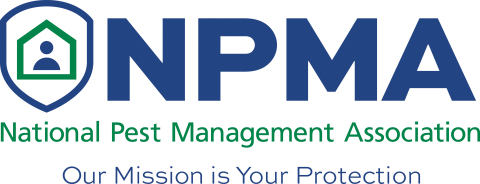NPMA Launches New Video Series on the Threat of Invasive Pests to the U.S.
NPMA Launches New Video Series on the Threat of Invasive Pests to the U.S.
The National Pest Management Association launches animated video series to demonstrate nationwide spread of invasive species
FAIRFAX, Va.--(BUSINESS WIRE)--The National Pest Management Association (NPMA) is educating Americans about the spread of invasive pests throughout the U.S. with the launch of its latest animated video project, Invasive Species. This new video series, featuring six episodes of custom-animated illustrations, shines a spotlight on the various invasive species that have traveled far and wide to the United States, where they continue to spread at increasingly alarming rates.
In addition to demonstrating how these pests arrived in America, NPMA is underscoring to consumers the dangerous health and property threats posed by these species, which often travel long distances by means of international shipping and travel.
“Invasive species are known to cause severe property damage and continue to present new health threats as they rapidly spread nationwide,” said Cindy Mannes, Senior Vice President of Public Affairs for the National Pest Management Association. “What sets these pests apart from domestic insects is that they typically do not have natural predators in the environments they invade, which expedites just how quickly their populations can grow and establish themselves in various regions of the country.”
The first step in preventing invasive species from threatening your family, health and home is familiarizing yourself with these insects as well as their habitats. In their new video project, the experts at NPMA are encouraging folks to be on the lookout for the following invasive pests:
- Brown marmorated stink bug: Although they’re not harmful to human health, these pests do stink when they’re crushed. Look out for these bugs, which have a mottled gray-ish brown color, before they cause damage to the plants in your garden.
- Asian giant hornet: Hailing from northern India and eastern Asia, the Asian giant hornet can be identified by its light orange, brown and black-striped body as well as its infamously large size. These sneaky stinging insects keep a low profile with underground nests and can sting repeatedly when threatened.
- Asian longhorned tick: This tick species, which is reddish-brown when unfed and grey when full of blood, can pose significant health threats to animals and humans.
- Spotted lanternfly: Ranging from red, black and light brown in color, these pests are a major threat to native trees and agriculture. If you see them, be sure to stomp on them to stop their spread.
- Red imported fire ant: This dark, reddish brown ant is best known for its painful sting.
- Formosan termite: This invasive pest, which tends to be creamy white or brown in color, is the most aggressive termite known to science and can cause costly damage to your home.
In staying vigilant against invasive species, the public can take important strides in slowing the rapid spread of these pests and, as a result, work collectively to protect agricultural resources and human health. “If you spot an invasive species infestation, be sure to contact a licensed pest control professional, who can confirm the species and recommend a safe removal method,” said Mannes.
For more information, please visit www.PestWorld.org and click here to watch the full video.
About the National Pest Management Association
The NPMA, a non-profit organization with more than 5,500 members, was established in 1933 to support the pest management industry's commitment to the protection of public health, food and property from the diseases and dangers of pests. For more information, visit PestWorld.org or follow @PestWorld on Facebook, Twitter, Pinterest, TikTok and YouTube.
Contacts
Allie Long
Vault Communications
215-870-6106
along@vaultcommunications.com

